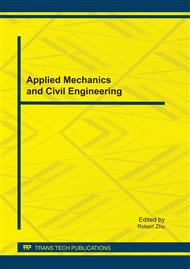p.42
p.50
p.59
p.65
p.72
p.77
p.82
p.87
p.95
Global Stability Analysis of the Wake behind a Circular Cylinder Based on the POD-Chiba Method
Abstract:
A proper orthogonal decomposition (POD) method is applied to study the global stability analysis for flow past a stationary circular cylinder. The flow database at Re=100 is obtained by CFD software, i.e. FLUENT, with which POD bases are constructed by a snapshot method. Based on the POD bases, a low-dimensional model is established for solving the two-dimensional incompressible NS equations. The stability of the flow solution is evaluated by a POD-Chiba method in the way of the eigensystem analysis for the velocity disturbance. The linear stability analysis shows that the first Hopf bifurcation takes place at Re=46.9, which is in good agreement with available results by other high-order accurate stability analysis methods. However, the calculated amount of POD is little, which shows the availability and advantage of the POD method.
Info:
Periodical:
Pages:
72-76
Citation:
Online since:
October 2011
Authors:
Keywords:
Price:
Сopyright:
© 2012 Trans Tech Publications Ltd. All Rights Reserved
Share:
Citation:


